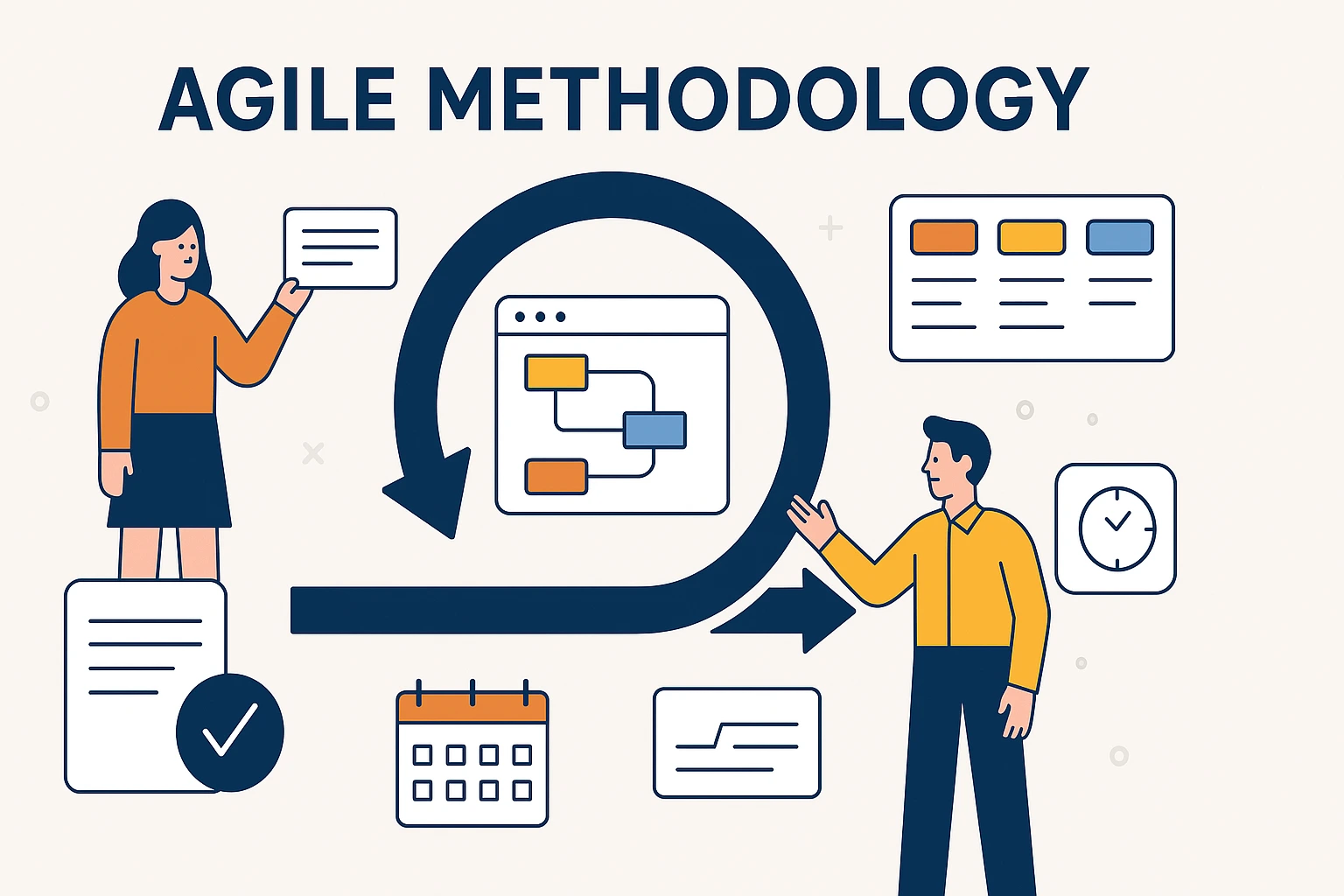Agile methodology in software development has revolutionized how teams design, develop, and deliver software. By promoting iterative progress, customer collaboration, and flexibility to change, Agile has become the gold standard in modern software engineering.
What is Agile Methodology?
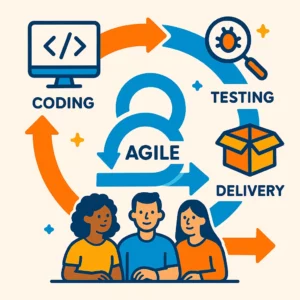
Agile methodology is a software development framework that emphasizes incremental delivery, team collaboration, and continual planning and improvement. Unlike traditional waterfall models, Agile breaks down the project into small, manageable units known as iterations or sprints, usually lasting 1 to 4 weeks. Each sprint delivers a potentially shippable product increment, allowing for real-time feedback and faster market adaptation.
Key Principles of Agile Methodology

The Agile Manifesto outlines four fundamental values and twelve principles that guide the development process. Here are the core values:
-
Individuals and interactions over processes and tools
-
Working software over comprehensive documentation
-
Customer collaboration over contract negotiation
-
Responding to change over following a plan
These values foster a dynamic environment where development teams can adjust to shifting requirements without derailing progress.
Popular Agile Frameworks in Practice
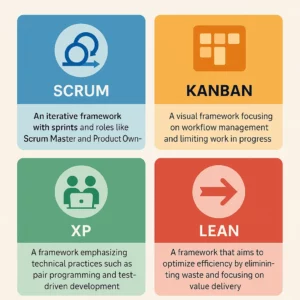
Agile is not a single methodology but an umbrella term for several frameworks that adhere to Agile principles. Some of the most widely used frameworks include:
Scrum
Scrum is a lightweight Agile framework that promotes transparency, inspection, and adaptation. It involves key roles such as the Product Owner, Scrum Master, and Development Team. Work is organized into sprints, and progress is monitored through daily stand-ups, sprint planning, sprint reviews, and retrospectives.
Kanban
Kanban focuses on visualizing workflows using a Kanban board. It aims to limit work in progress (WIP) and optimize flow by identifying bottlenecks. Unlike Scrum, Kanban does not prescribe roles or iterations but encourages continuous delivery.
Extreme Programming (XP)
XP is a more technical Agile framework that emphasizes engineering practices such as pair programming, test-driven development (TDD), and continuous integration to improve software quality.
Lean Software Development
Inspired by lean manufacturing, this approach seeks to eliminate waste, amplify learning, and deliver as fast as possible. Lean development is highly focused on customer value and efficient workflows.
Core Components of Agile Development
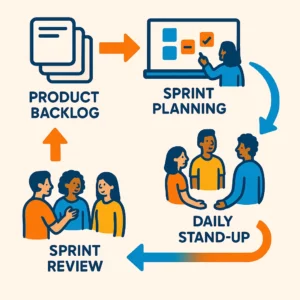
User Stories
User stories describe features from the perspective of the end-user. Written in a simple, non-technical format, they focus on the value the functionality delivers to the customer. Example: “As a user, I want to reset my password so that I can regain access to my account.”
Backlog Management
The product backlog is a prioritized list of features, bug fixes, enhancements, and technical tasks. The Product Owner is responsible for maintaining and prioritizing this list.
Sprint Planning
During sprint planning, the team selects items from the backlog to work on during the upcoming sprint. Tasks are broken down, estimated, and assigned to team members.
Daily Stand-Ups
Also known as daily scrums, these short meetings help the team synchronize activities and identify impediments. Each member answers three questions:
- What did I do yesterday?
- What will I do today?
- Are there any obstacles in my way?
Sprint Review and Retrospective
At the end of each sprint, the team conducts a sprint review to demonstrate completed work to stakeholders, and a sprint retrospective to reflect on what went well, what didn’t, and how to improve in the next sprint.
Benefits of Agile Methodology
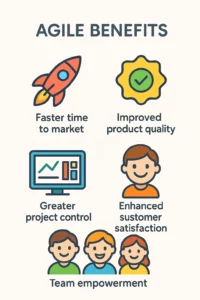
Faster Time to Market
By delivering working software in short iterations, Agile enables quicker releases and more frequent updates, allowing businesses to adapt swiftly to customer needs and market changes.
Improved Product Quality
Continuous testing, regular feedback, and iterative refinement ensure that defects are identified and resolved early in the development cycle.
Enhanced Customer Satisfaction
Frequent releases and open communication with stakeholders ensure that the end product aligns with customer expectations and delivers high value.
Greater Project Control
Agile’s transparency and regular progress updates enable better risk management, more accurate planning, and increased stakeholder visibility.
Team Empowerment and Morale
Agile fosters a collaborative team environment, where developers feel more involved and accountable. This leads to higher morale and better productivity.
Agile vs. Traditional Waterfall Model
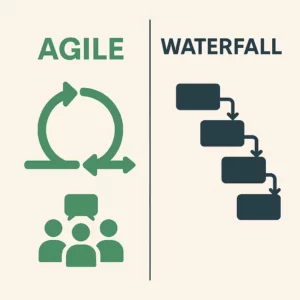
| Feature | Agile Methodology | Waterfall Model |
|---|---|---|
| Development Approach | Iterative and incremental | Sequential |
| Flexibility | Highly flexible, embraces changes | Rigid, difficult to accommodate changes |
| Customer Involvement | Continuous feedback from stakeholders | Customer input only at beginning and end |
| Testing | Continuous throughout the project | Testing phase comes after development |
| Delivery | Early and frequent releases | Single final delivery |
| Risk Management | Issues identified early | Risk of discovering problems too late |
Challenges in Agile Implementation

Despite its advantages, Agile comes with its own set of challenges:
-
Resistance to change from traditional teams or management
-
Difficulty in estimating time and cost
-
Requires high level of team collaboration
-
Scope creep due to evolving requirements
-
Need for skilled Agile practitioners for successful implementation
Agile Tools and Software
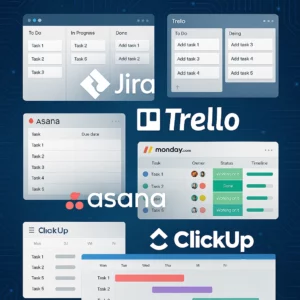
Numerous tools support Agile development by enhancing visibility and communication:
-
Jira – Popular for Scrum and Kanban boards, backlog tracking, and reporting
-
Trello – Lightweight Kanban-style task management
-
Asana – Useful for Agile project tracking and collaboration
-
Monday.com – Provides visual project tracking with flexible workflows
-
ClickUp – Combines Agile features with documentation, time tracking, and collaboration
Agile Best Practices for Teams
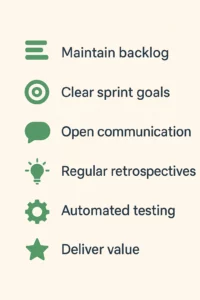
-
Maintain a prioritized product backlog
-
Keep sprint goals clear and achievable
-
Encourage open and honest communication
-
Hold regular retrospectives to improve processes
-
Use automated testing and continuous integration
-
Focus on delivering value, not just completing tasks
When to Use Agile in Software Projects
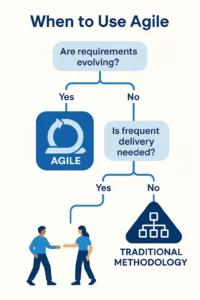
Agile is ideal when:
-
Requirements are expected to evolve
-
The client demands frequent releases
-
Projects are complex and long-term
-
Cross-functional teams are collaborative and communicative
However, for smaller projects with well-defined requirements and strict deadlines, traditional methodologies may still be suitable.
Conclusion
Agile methodology has fundamentally transformed software development by promoting flexibility, collaboration, and customer-centricity. Teams adopting Agile can expect faster delivery, better-quality products, and higher client satisfaction. However, successful implementation requires discipline, skilled professionals, and the right tools. Whether using Scrum, Kanban, or any other framework, embracing Agile means committing to continuous improvement and delivering value at every stage.

